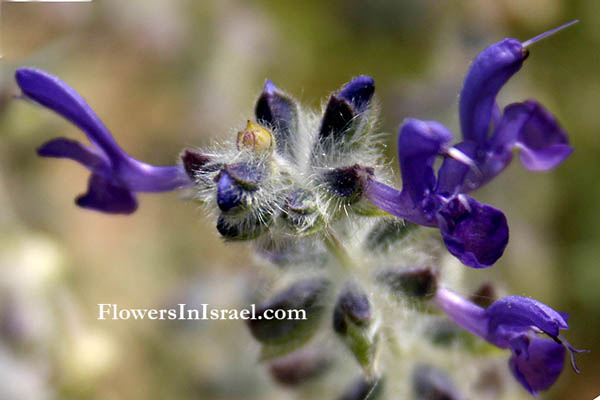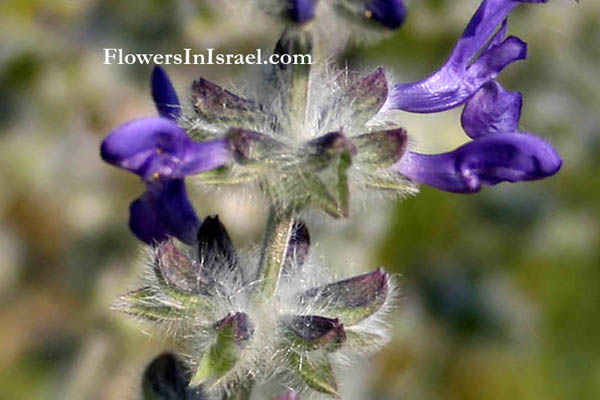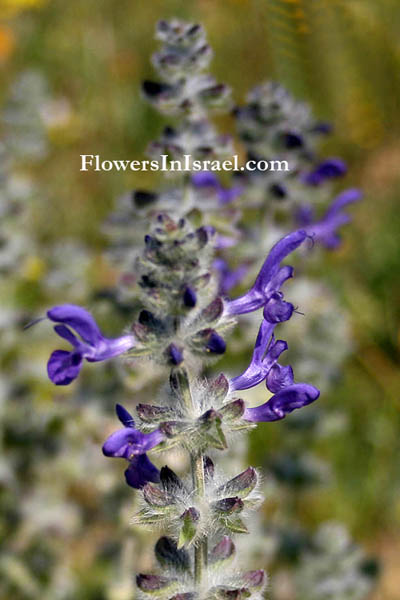Hebrew: מרווה צמירה, Arabic: لسينه
| Scientific name: | Salvia lanigera Poir. | |
| Common name: | Wrinkle-leaved sage, Wooly Sage | |
| Hebrew name: | מרווה צמירה | |
| Arabic: name: | لسينه | |
| Family: | Labiatae / Lamiaceae, שפתניים |

|
| Life form: | Chamaephyte, semi-shrub | |
| Stems: | Up to 30 cm, covered with short erect hairs | |
| Leaves: | Opposite, dissected, pinnate | |
| Flowers: | Violet flowers in whorls of 6-8 | |
| Fruits / Pods: | Nutlets | |
| Flowering Period: | February, March, April, May | |
| Habitat: | Shrub-steppes | |
| Distribution: | Mediterranean Woodlands and Shrublands, Semi-steppe shrublands, Shrub-steppes, Deserts and extreme deserts | |
| Chorotype: | Med - Saharo-Arabian | |
| Summer shedding: | Perennating |

Derivation of the botanical name: Salvia, Latin salvere, to save, referring to the long-believed healing properties of salvia. Pliny the Elder was the first known to use the Latin name salvia. lanigera, woolly. The Israeli botanists Dr. Ephraim and Hanah Hareuveni pointed out that the architecture of the vertical inflorescence of this species of Salvia resembles the shape of the Menorah, in particular—the Salvia Palaestina. Therefore, they suggested that it had inspired the design of the Menorah. Moreover, based on etymology perspectives they suggested that the Hebrew word “Marva, מרווה” (Salvia) was originated from the Hebrew word “Moriah” (the Temple Mount name), reflecting the connection between this plant and the Menorah, which was situated inside the Holy Temple in Jerusalem.

|